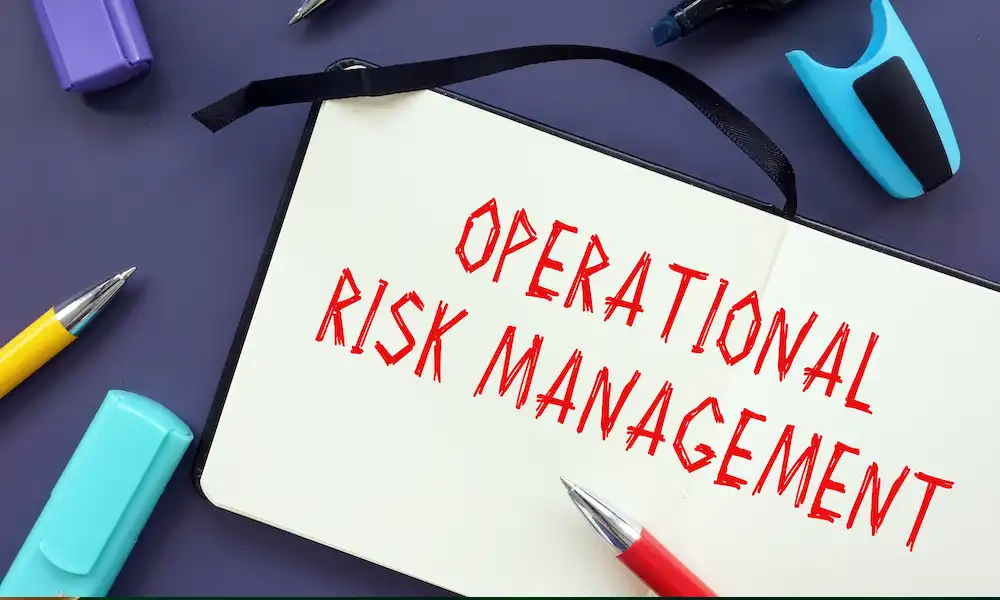Management
Mastering the Unpredictable: A Guide to Operational Risk Management in Business

Operational risk management isn’t just a buzzword or a box to tick on a compliance checklist; it’s the safety net that can save your business from taking a potentially catastrophic fall.
Imagine walking a tightrope without a safety net, high above the ground. That’s a bit like running a business without a solid plan for managing operational risks. Every decision, every process, and every system in place is part of that tightrope walk, where the stakes are high and the margin for error is slim.
In the ever-evolving landscape of the business world, where change is the only constant, operational risks lurk around every corner.
From the threat of system failures and data breaches to the human errors that can disrupt the smooth flow of operations, these risks can strike at the heart of your business, threatening not just your bottom line but your reputation and long-term sustainability.
But here’s the kicker: with the right approach to operational risk management, not only can these risks be mitigated, but they can also be turned into opportunities for growth and improvement.
So, as we dive into the world of operational risk management, think of it as learning the art of tightrope walking with the best safety net technology can offer.
Taking care of operational risk is about mastering the unpredictable, staying one step ahead of the game, and ensuring that your business isn’t just surviving but thriving, even in the face of potential disruptions. Ready to walk the tightrope with confidence? Let’s get started.
Understanding Operational Risk
Diving into the nitty-gritty of operational risk might feel like opening Pandora’s box. You’ve got everything from the classic slip-ups in your day-to-day processes to the kind of tech glitches that make you want to pull your hair out. And let’s not even start on the human factor – because, as we all know, to err is human, but in business, those errors can cost you big time.
At the heart of operational risk are those pesky process failures. Imagine your top-notch sales strategy falling flat because the order system decided to take an unexpected nap. Then there are system outages, the dreaded downtime that turns your smooth operations into a snail-paced crawl, frustrating customers and employees.
And about human error – it’s the wild card that can throw a wrench in the most well-oiled machines. From data entry blunders to misjudged decisions, the human element adds a layer of unpredictability that keeps business owners on their toes.
But wait, there’s more! External events like natural disasters or cyber-attacks don’t exactly send RSVPs before they crash your party. These uninvited guests can disrupt your business operations in ways you might not even want to imagine.
So, what’s the takeaway here? Operational risks are like the many-headed Hydra; cut one head off, and two more sprouts in its place. They’re diverse, they’re sneaky, and they’re an integral part of the business landscape. But don’t worry, it’s not all doom and gloom. Understanding these risks is the first step toward taming the beast and turning potential pitfalls into stepping stones for success.
Tools and Techniques for Managing Operational Risk
First on our list is technology – the shining knight in digital armor. In this day and age, technology isn’t just about flashy gadgets; it’s a critical ally in your quest to tame operational risks. From sophisticated software that can predict potential system failures before they happen, to AI-driven analytics that sift through mountains of data to spot trends and anomalies, technology is your best bud in staying one step ahead of the game.
But it’s not all about high-tech solutions. Sometimes, it’s the simple things that make the biggest difference, like clear and concise policies and procedures. These are the guiding stars that keep your crew rowing in the right direction, ensuring that everyone knows what’s expected of them and how to handle situations when things go south.
Training and awareness
Training and awareness programs are another ace up your sleeve. It’s one thing to have all the fancy tools and protocols, but if your team isn’t up to speed on how to use them or why they’re important, you might as well be sailing without a compass. Regular training sessions can turn your employees from potential risk factors into your frontline defense against operational mishaps.
And let’s not forget about the power of communication. In the intricate dance of operational risk management, communication is like the rhythm that keeps everyone in sync. It’s about creating an environment where issues can be raised without fear, and information flows freely, ensuring that potential risks are spotted and addressed before they can escalate.
Culture of risk awareness
But here’s the real game-changer: a culture of risk awareness. When risk management becomes part of your organization’s DNA, you’ve hit the jackpot. This is where everyone, from the CEO to the newest intern, is tuned into the importance of managing risks and is actively engaged in the process. It’s about fostering a mindset where managing risk is not just the responsibility of a select few but a collective effort that’s woven into the very fabric of your business.
Integrating Operational Risk Management into Corporate Culture
Wrapping up our journey through the labyrinth of operational risk management, it’s clear that this isn’t just about dodging the occasional curveball thrown our way. It’s about embracing a mindset where risk is not seen as merely a threat, but as a part of the business landscape that, when navigated wisely, can lead to greater resilience and innovation.
Proactive approach
As we’ve explored the various facets of managing operational risks, from identifying and assessing to monitoring and mitigating them, one thing stands out: the importance of a proactive, integrated approach. Operational risk management is not a siloed activity, confined to a specific department or a checklist to be ticked off. It’s a dynamic, ongoing process that requires collaboration across all levels of the organization.
Final Words
The key takeaway? Operational risk management is not a one-and-done deal. It’s an ever-evolving discipline that adapts as your business grows and changes. The tools and strategies we’ve discussed are not just mechanisms for preventing losses; they are levers for driving performance and creating value.
In this constantly changing business environment, staying ahead means being agile, vigilant, and ready to adapt. By fostering a culture that values risk awareness and continuous improvement, businesses can not only navigate the complexities of today’s world but also pave the way for a future where challenges are transformed into opportunities.
So, as we conclude this exploration of operational risk management, remember that the journey doesn’t end here. It’s a continuous voyage towards building a more robust, resilient, and forward-thinking business. The strategies and tools you’ve gathered along the way are your compass and map, guiding you through the uncertainties of the business world with confidence and agility.






